Turtle Beach, Jan 1
Just an hour down the road, the coastline changes again, picturesque bays give way to long coastal beaches. Our next camp wasn’t easy to reach—Google Maps led us astray, though not entirely its fault, we had missed a small, hand-painted, tree branch obscured, sign pointing the way… doh! After a couple of hours battling the narrowing sand road with low-hanging branches, blocking traffic, and racing against the setting sun, we turned around. Passing back through the village, we encountered a fast-talking family who told us with hand signals the beach road was on the other side of town, about 30 minutes away. Thankfully, Wenke had been in contact with a restaurant owner via What’s App, who appeared by motorbike to escort us. We were way off & arrived well after dark.
This 10-km coastal sand stretch are the nesting grounds for annually returning turtles. Over a period of three months thousands of Olive Ridley turtles come ashore to dig their nests & lay eggs. We are a couple of weeks past the peak season but hoped to spot a few stragglers.
Parked by a red brick restaurant, Jose, who escorted us in is also the restaurant owner and conveniently the turtle guide too. For a fee of $8USD p/person, took us on a ‘2-km’ night walk along the beach in hopes of spotting turtles. A little steep, but that’s what we’ve come here to do, so we paid.
Setting off at 9:30pm we walking blind & barefoot in the sand beneath the starry night sky was wonderful. In the warm wind, with, headlamps when needed, we covered nearly 8 km searching for signs of turtles who had clearly been here. The dry sand resembling a giant golf ball, all pockmarked with nest dents. Just a few feet away & 6 inches deep lay millions of baby turtle eggs that will hatch on the coming full moon. Few, but enough will survive—our guide estimated just 10–15% make it, as poachers, birds, roaming dogs and bigger fish all take their toll.
We found a set of one way tracks, a turtle had very recently come ashore…then vanished… Our guide is certain the man on the motorbike who passed us earlier had poached not just the eggs, but perhaps the turtle too. Both considered a local delicacy and aphrodisiac. Sadly there was nothing we could do. Although we didn’t see any live turtles, we did find a several long dead ones, I’d like to think of as having died from old age. Back home at 11 p.m asleep minutes later.
January 2
In daylight, the camp wasn’t as picturesque with windblown garbage everywhere. The restaurant, doubling as the owners’ home, was a study in outdoor living: hammocks slung around tables was where the family slept, with very few personal possessions. Before leaving, Charley & Jaxon played with their baby parrot, named Rio who spoke Spanish and mimicked the owner’s laugh.
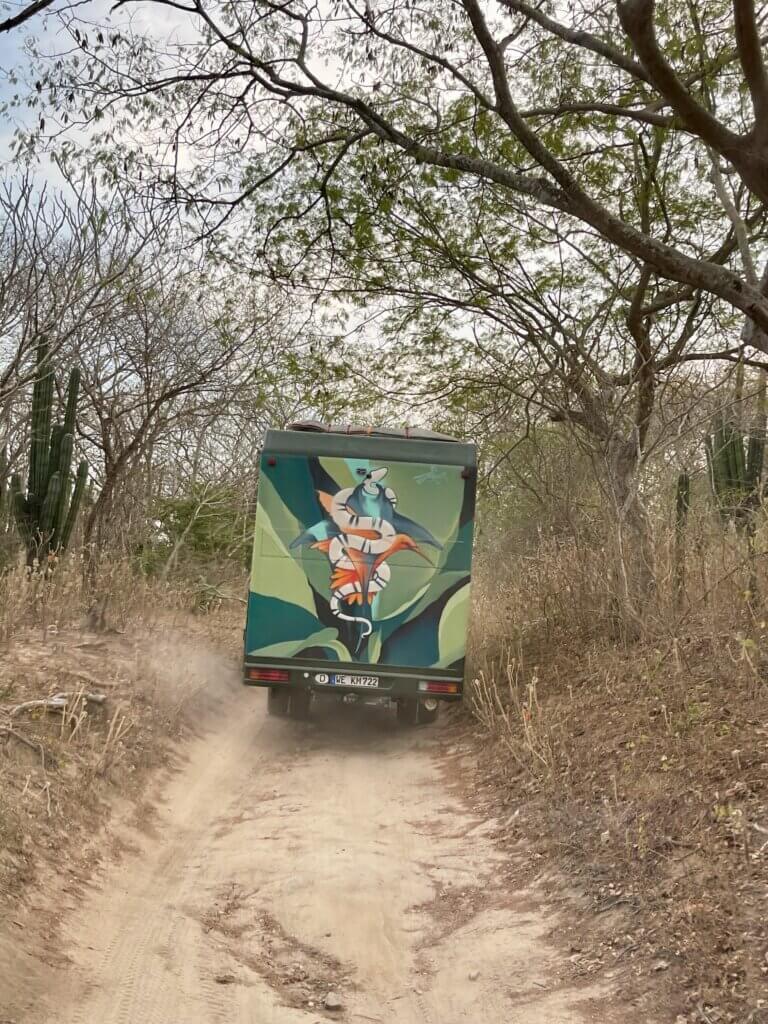
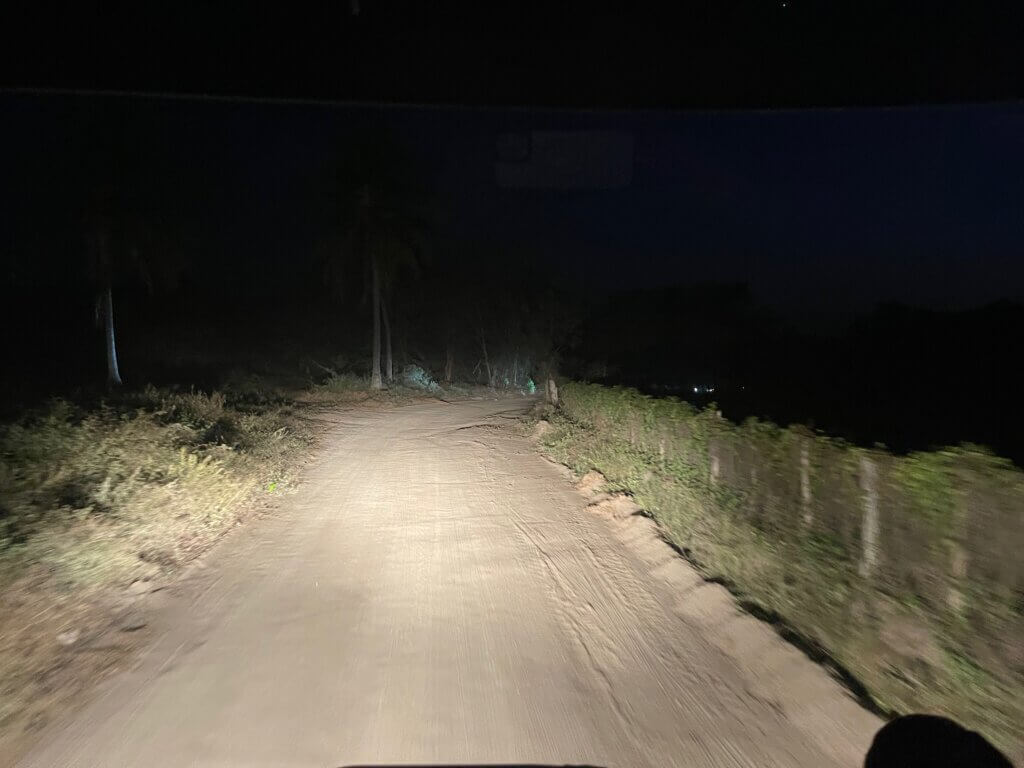
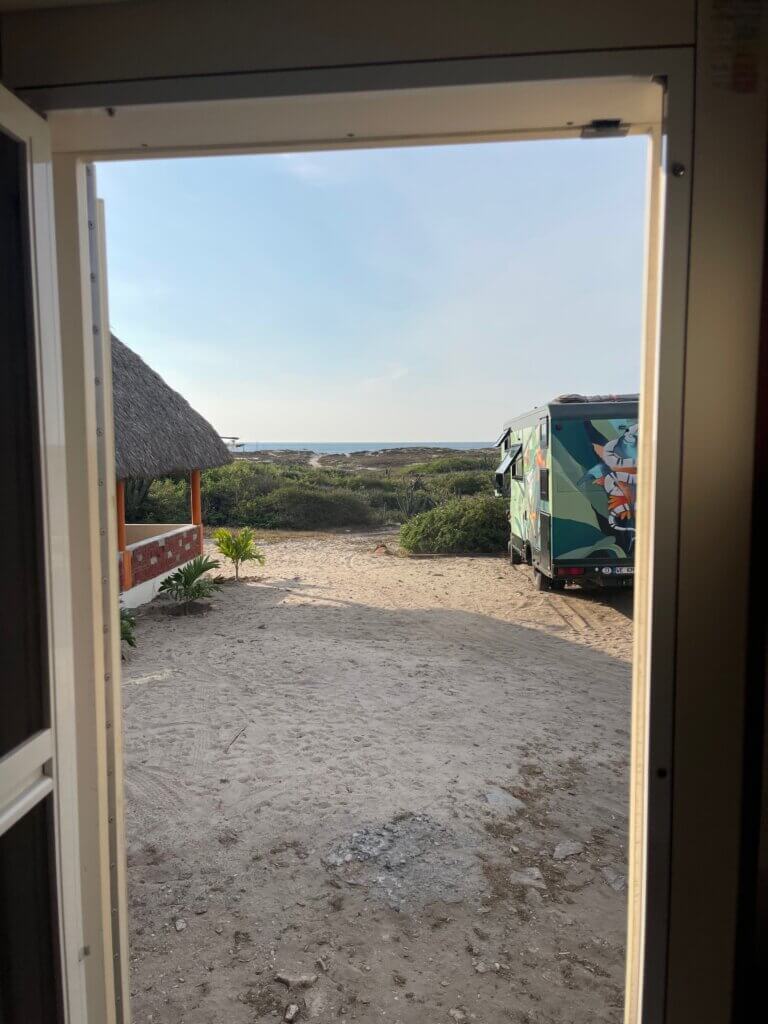
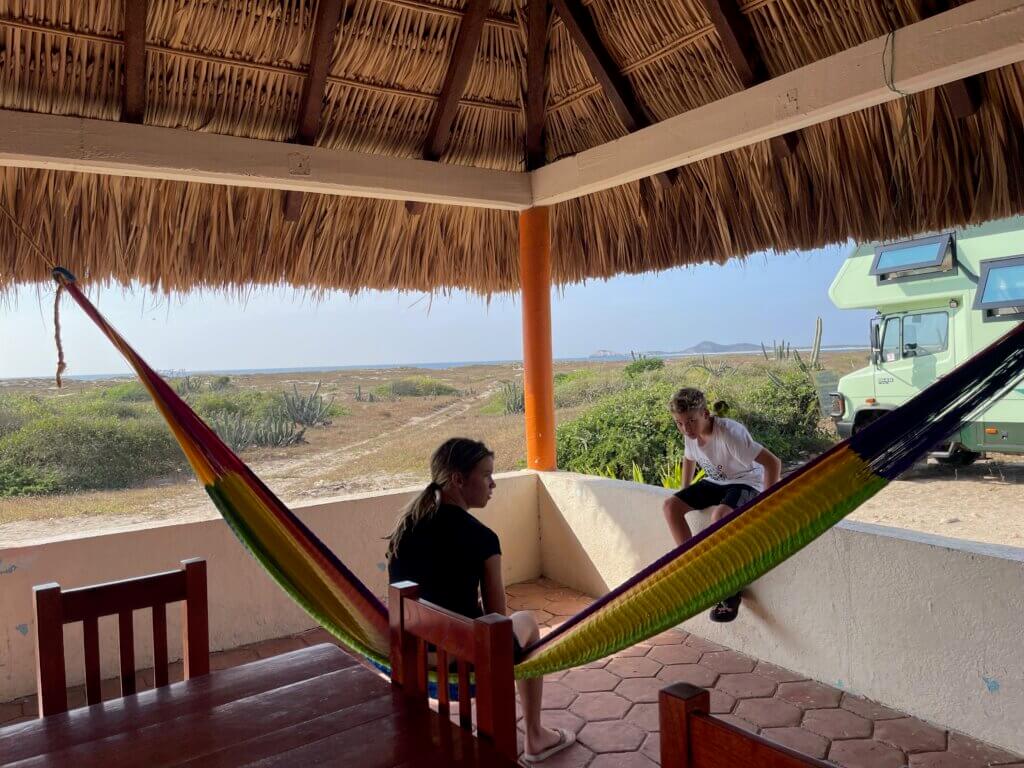
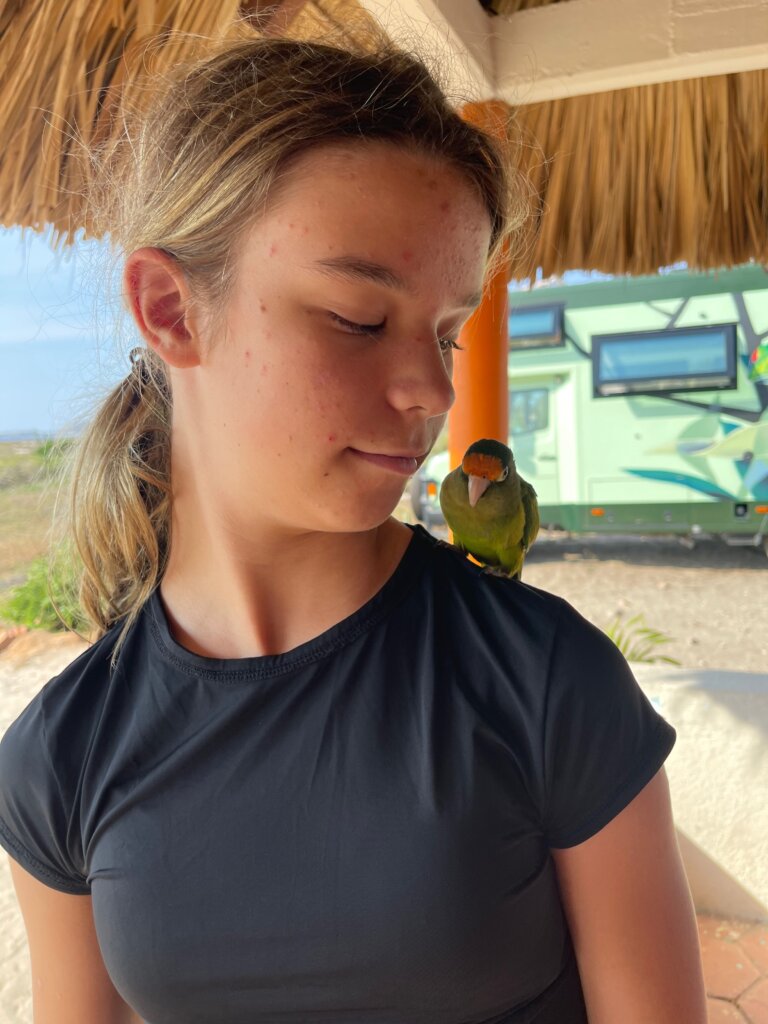
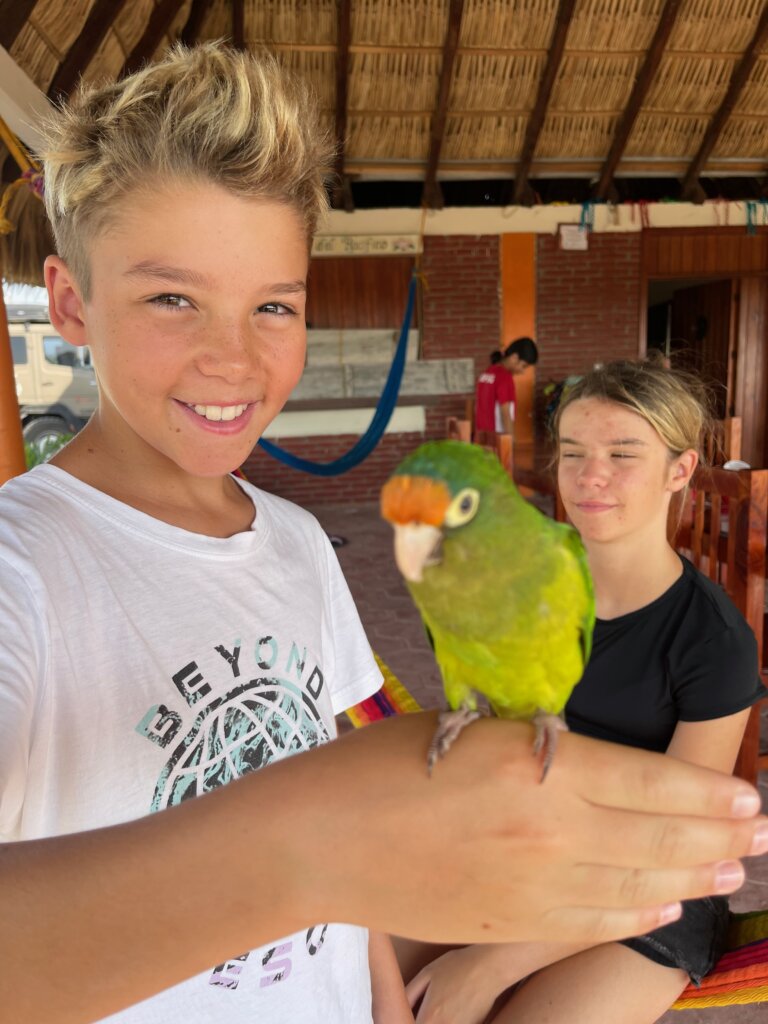
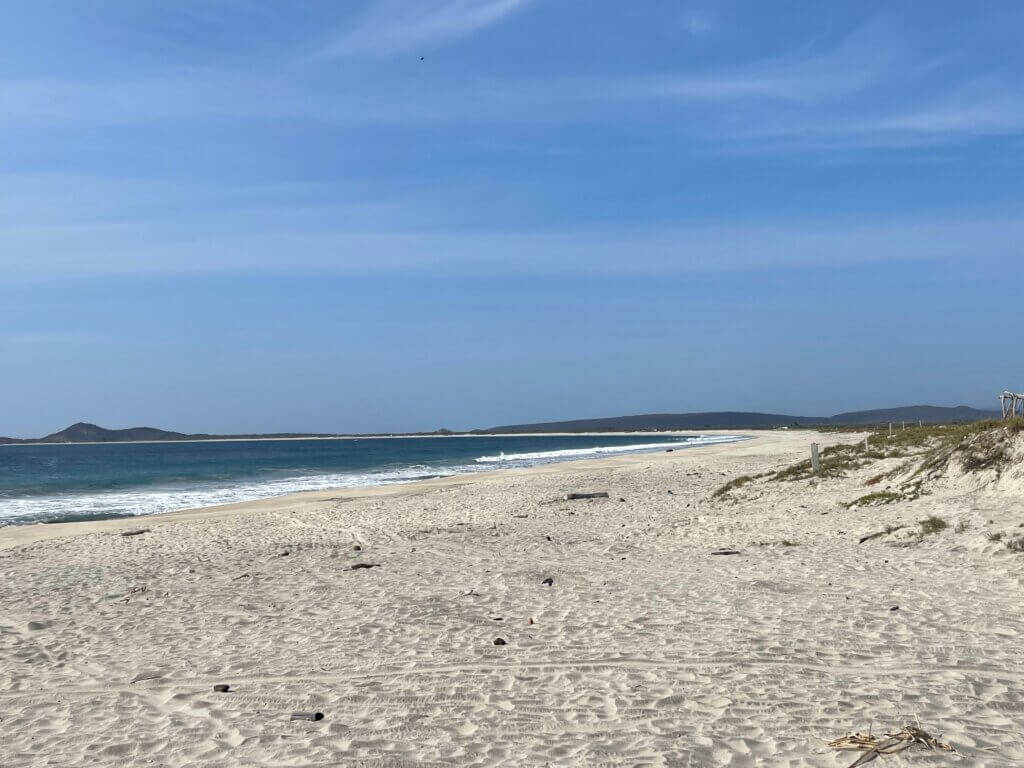
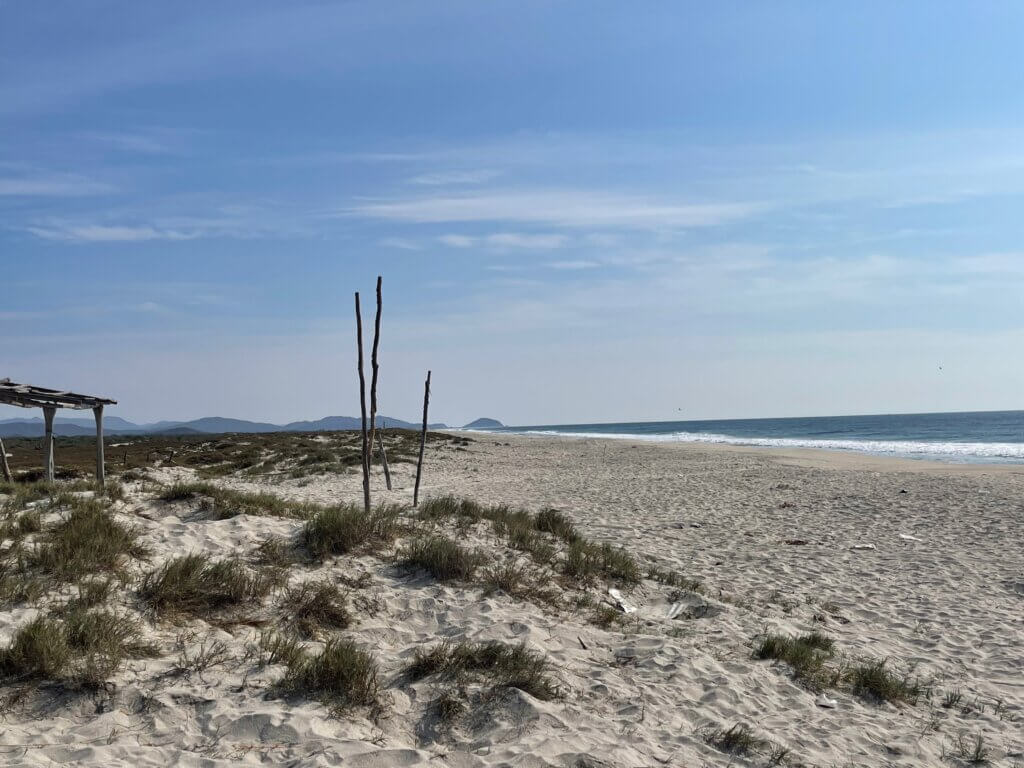
Ojio de Agua
We headed to a natural freshwater spring near Salina Cruz, a place we had camped on our last trip. It’s a perfect spot for swimming and an overnight stop. Twenty five pesos each entry fee & no charge to camp. Being holiday season, we weren’t surprised to find it packed. There was no sneaking in, driving our massive trucks through their tiny establishments certainly turned plenty of heads.
The pools were jammed with people, leaving zero personal space. We parked far away, cracked a cold beer, and waited. By dusk, the crowds cleared, leaving the place eerily deserted—except for the overwhelming amount of garbage.
The water is constantly flowing, so was clean when we finally took our turn. The water is clear & perfect temperature. Plenty of little black fish like to nibble at our feet, kinda like a natural pedicure, in a weird kind of way. I had to snap this photo taken nearly 5 years ago. Dinner with Wenke, Mario & Klass in our truck.
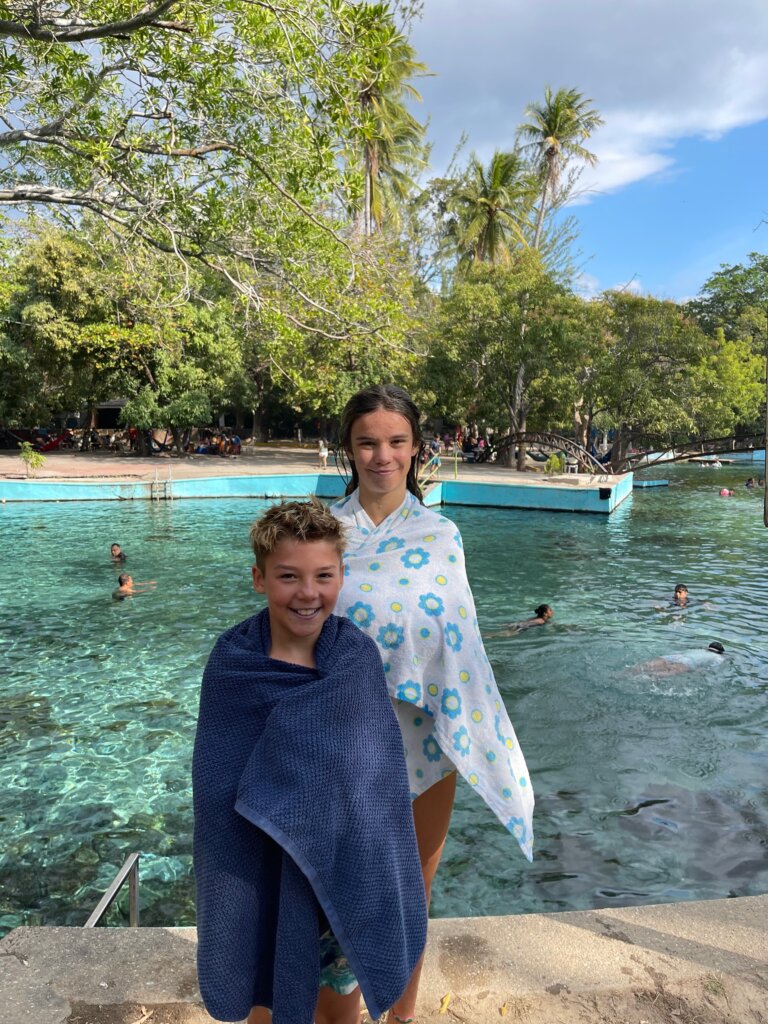
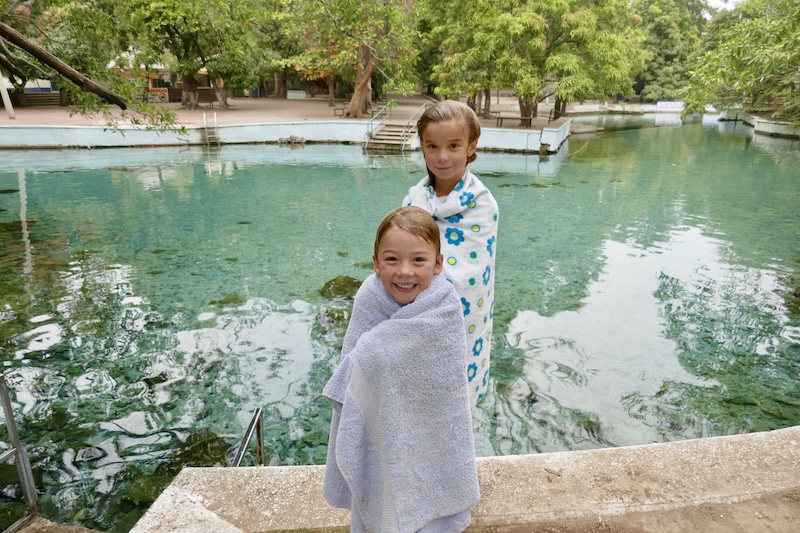
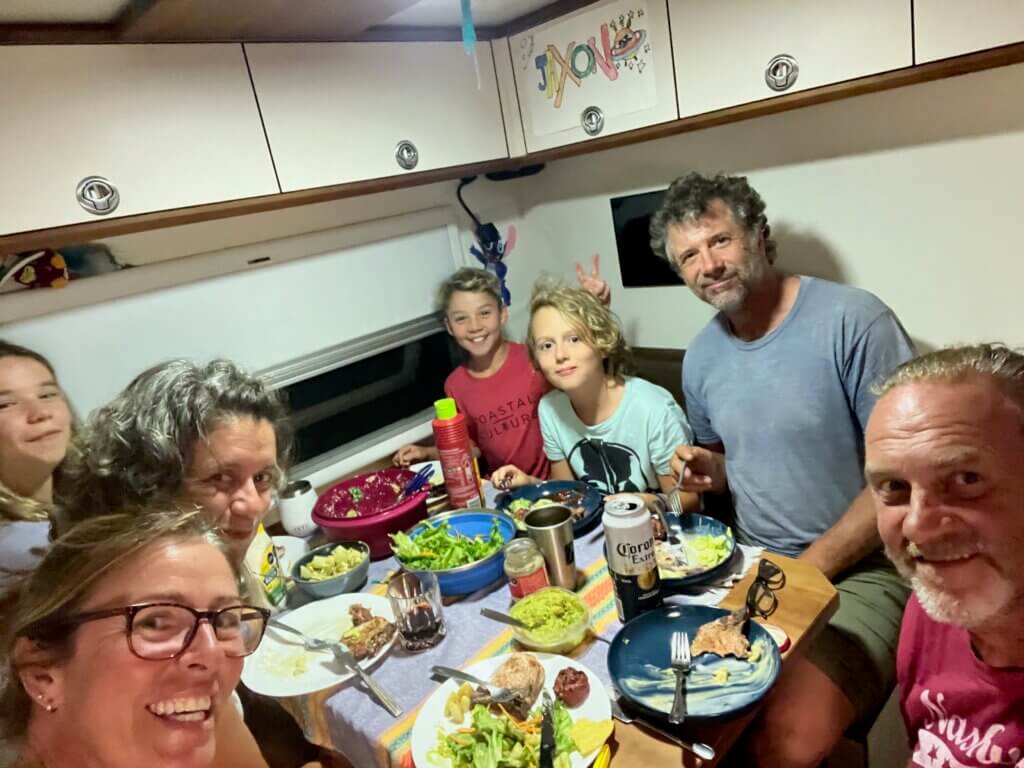
From Oaxaca to Chiapas
January 3rd
Before crossing the wind farm region, we passed dozens of people walking along the roadside, migrants on the move. We don’t know where they have come from or how far they have walked. Guatemala, Honduras or as far as Venezuela? All young & lean men, carrying all they own, often nothing at all, each looking for a better life. It’s hard to see or imagine all they have been through.
Soon after we pass by hundreds of turbines harnessing the stiff crosswinds, but only a third seemed operational. Warning signs advised drivers about strong gusts. Motorcyclists were leaning in at unnatural angles against the wind.
Further on, the air thickened with smoke from the usual garbage burns. The main dump lay just off the road, but I guess it was too far & drivers to actually pull off the road, so they just dump & burn wherever it lands, leaving the wind to scatter unburned debris for miles.
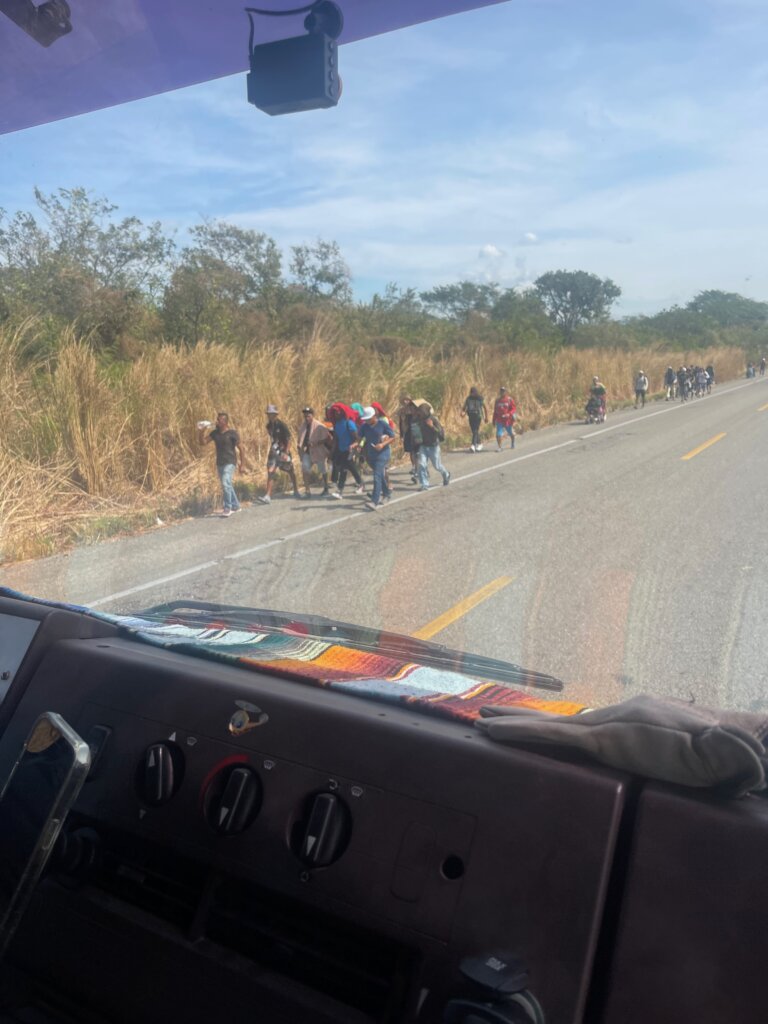
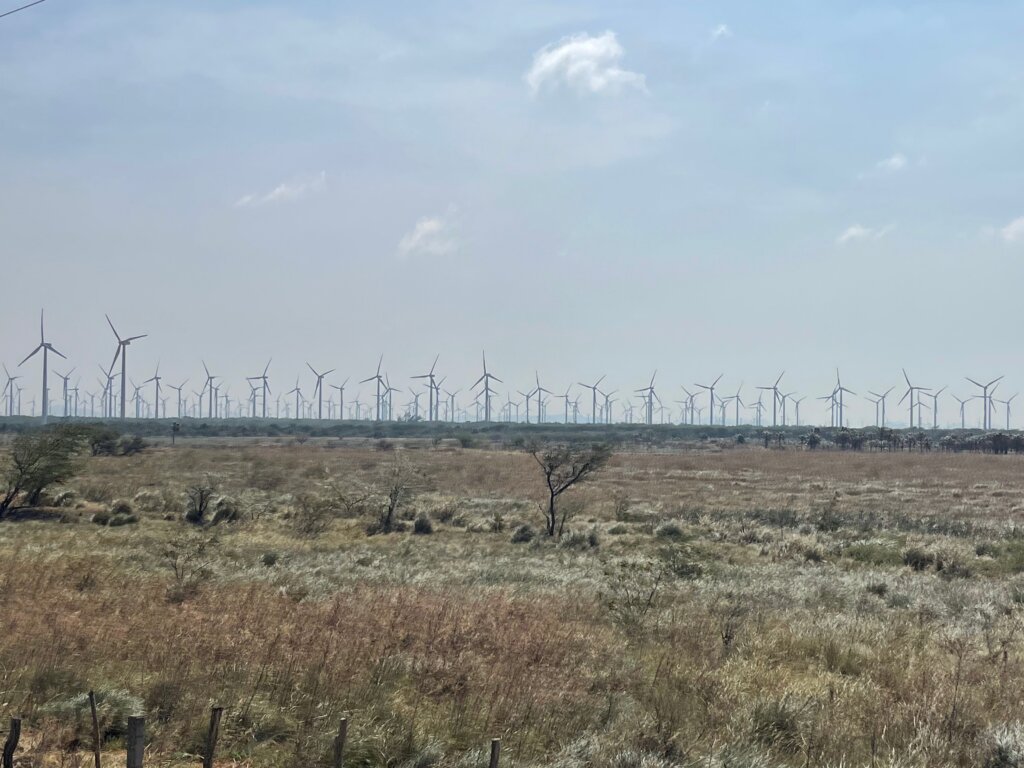
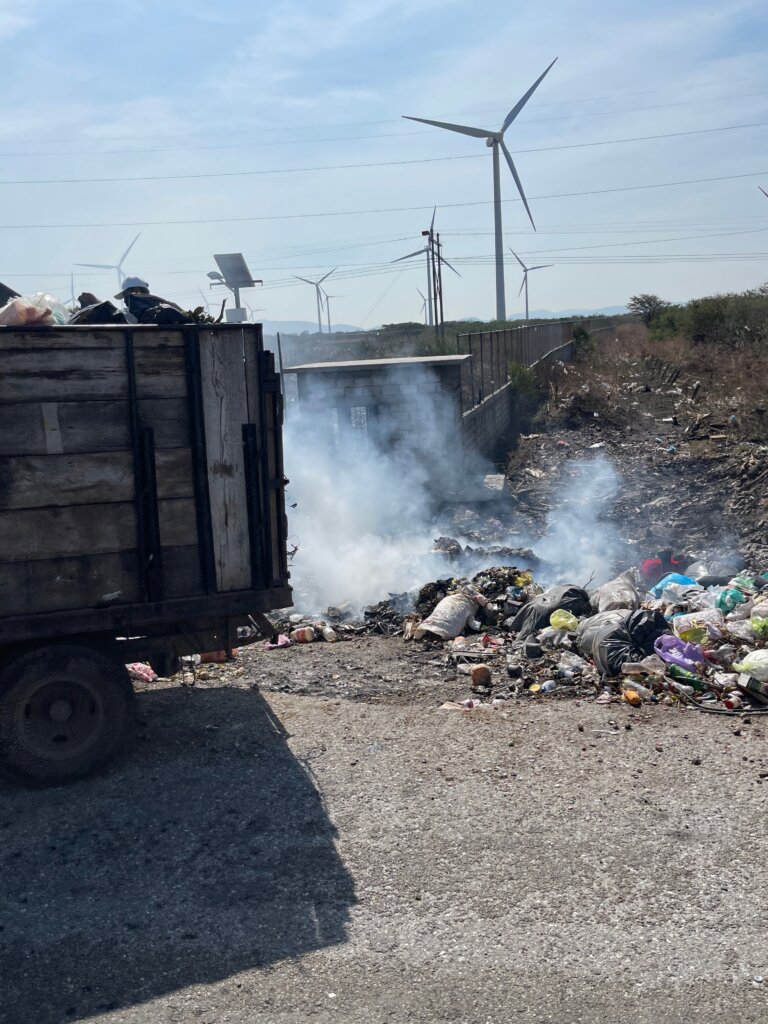
As we crossed into Chiapas, the landscape turned lush and green. Giant mango trees laden with fruit lined the roads wile mountains rose abruptly in the distance like crumpled-paper. Sticking to the coast, we avoided the hilly terrain, but had an equally tough drive as the toll road was a mess, worn with deep potholes. Beside us vast stretches of the new Interoceanic Railway was under construction. Billed as a tourist draw for Southern Mexico, it’s also a gamble to compete with the Panama Canal for moving goods, it’ll be interesting to see how this develops.
Tonalá Beach
That night we camped on the land of a Canadian man who had moved here 50 years ago. Clearing the land by hand, he planted every now-mature tree. The camp had everything we needed, including the 2nd best shower we’d had since leaving home. Clean and properly functioning, the cool water was decadent.
Before sunset, I did some hand washing at the wash station and hung them out dripping wet, no need to wring the—they will dry overnight in the warm wind. Making it to the beach in time for sunset, the kids played in the water while we watched the pelicans play in the waves, looping around in formation, taking turns in the front. It looked like they make a game of timing the swell before the wave breaks on the last bird. Flying so close to the water, with wingtips brushing the surface. The coastline is long, stretching endlessly in both directions.
As the sky shifted from pastel pinks to deep oranges, quad bikes and motorbikes raced up and down. Like a busy main road, forcing us to stay alert. We walked a while then enjoyed cold beer and fresh ceviche before heading back.
Before leaving I Indulged again in another shower, the gravity-fed, rain-style, with water pressure from every nozzle was dreamy. Meanwhile, Tim and Mario took the kids to spot crocodiles at the back of the property. Thankfully, they only saw one—a small six-footer that quickly retreated into the water.
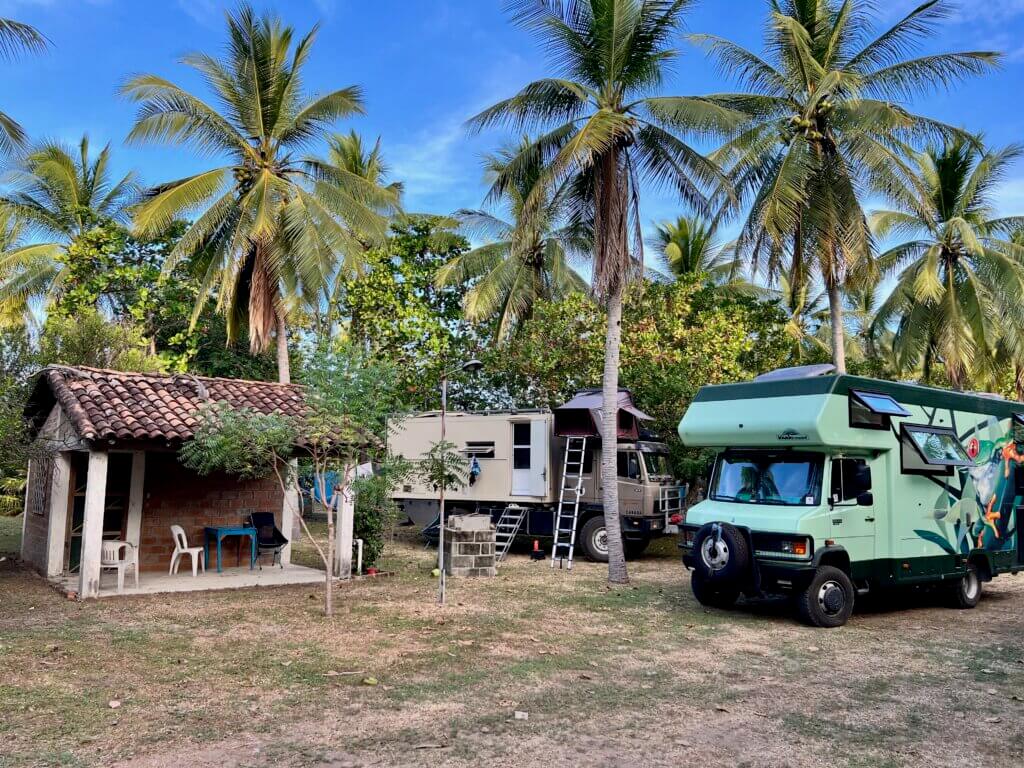
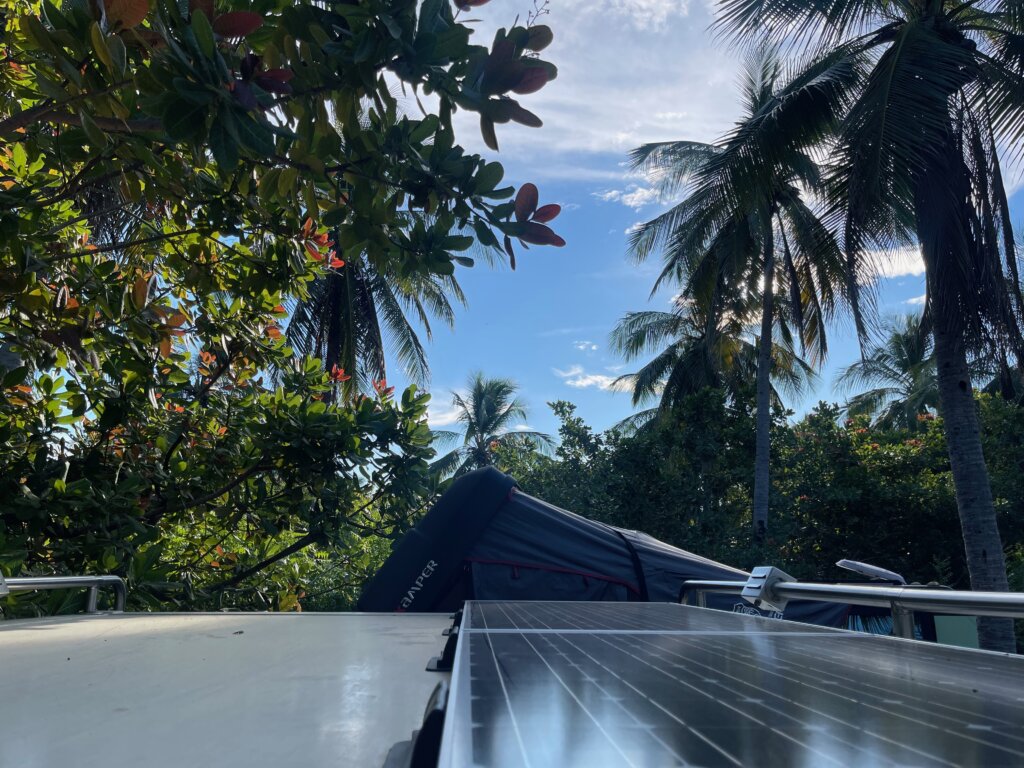
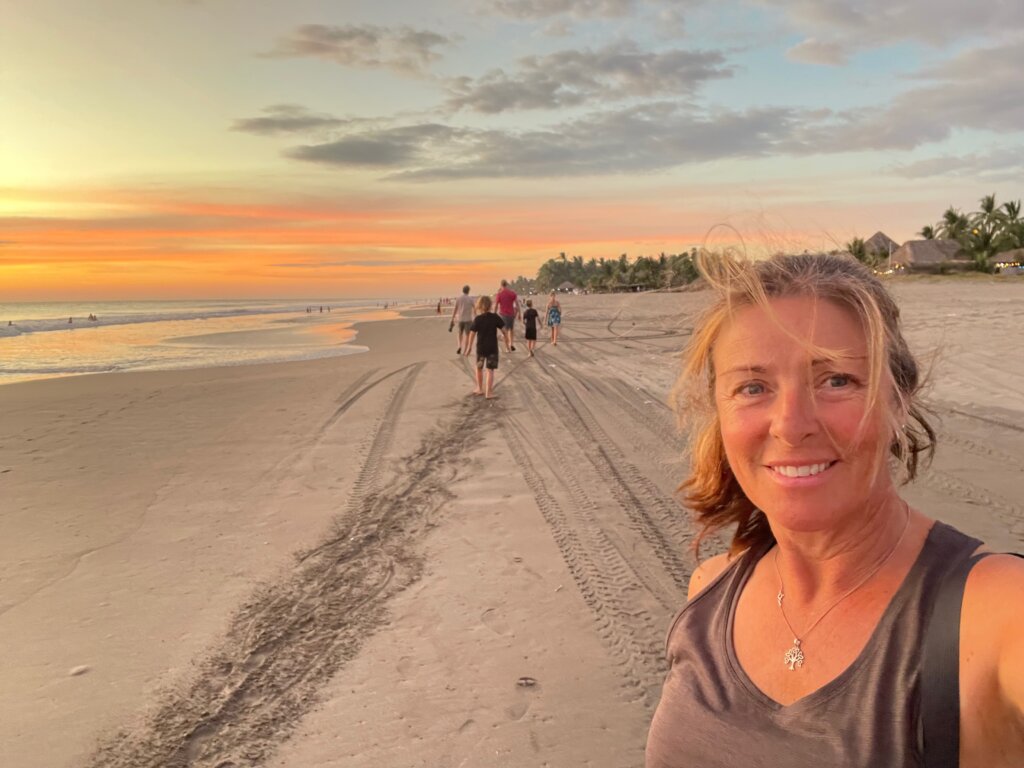
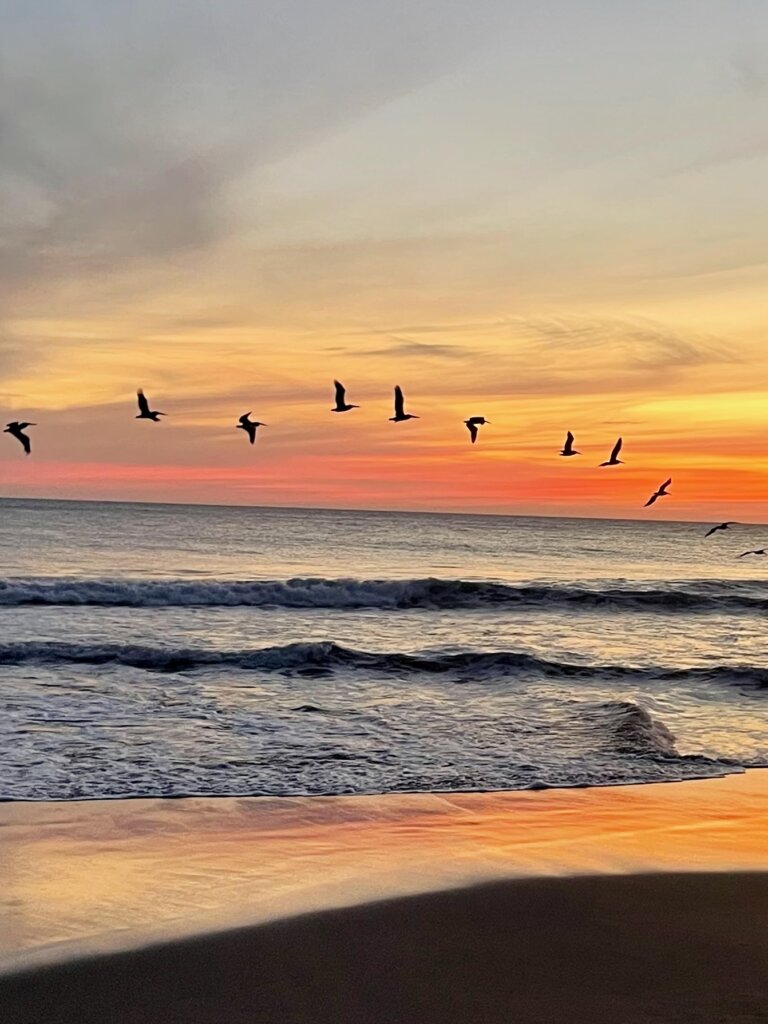
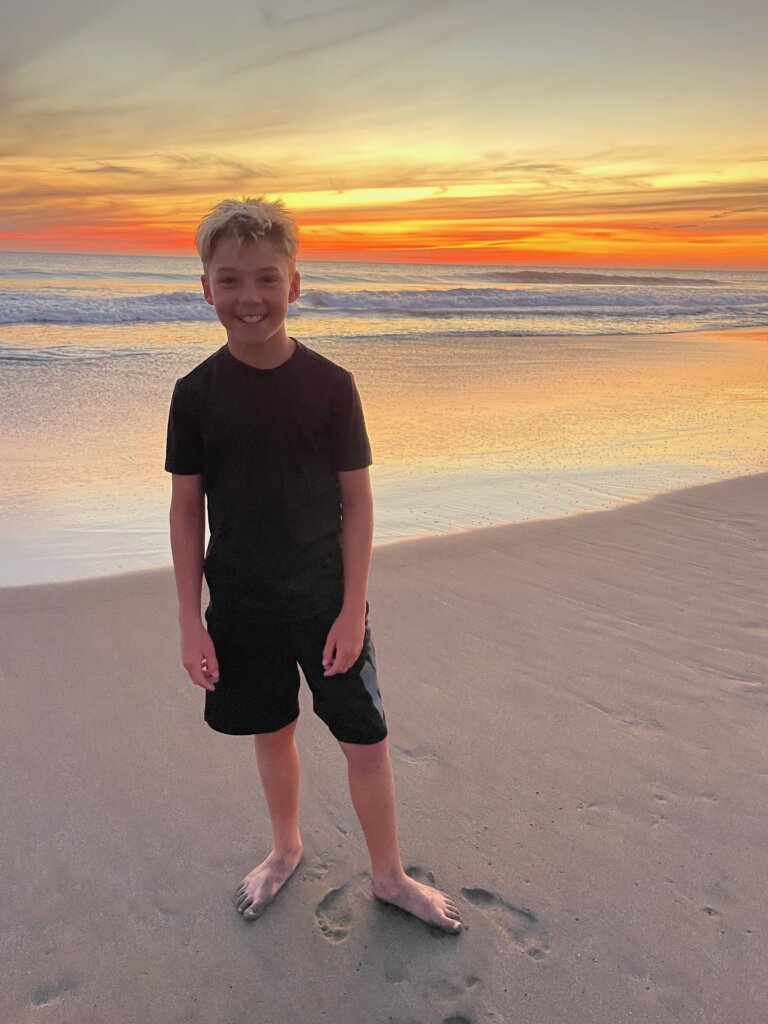
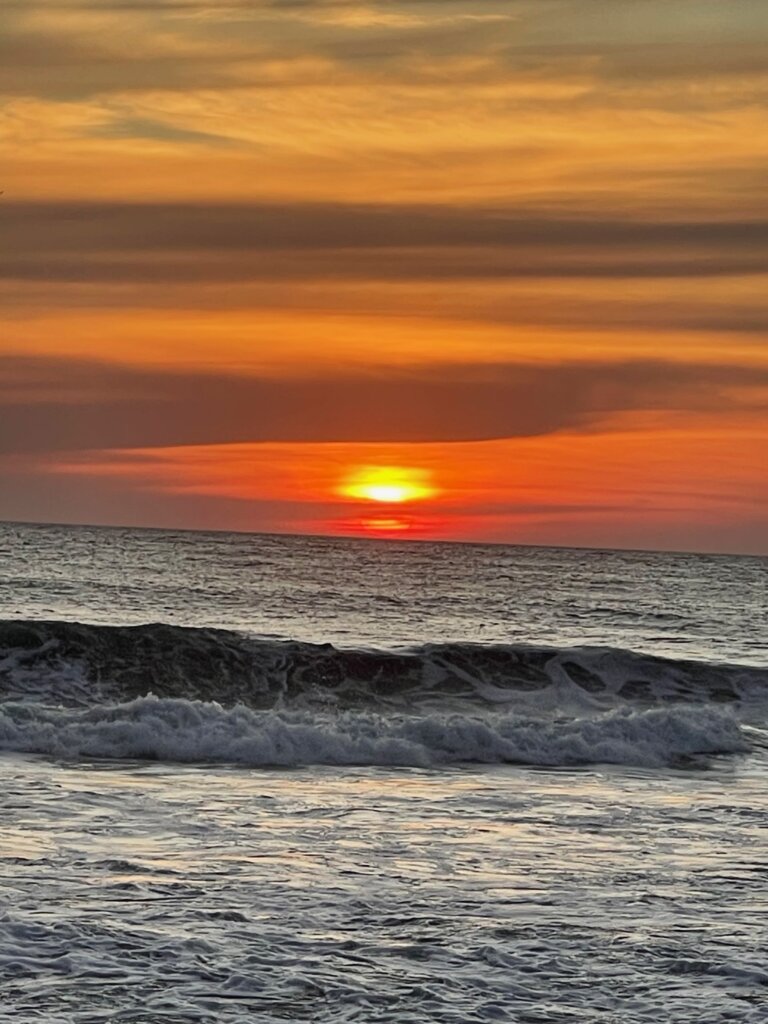
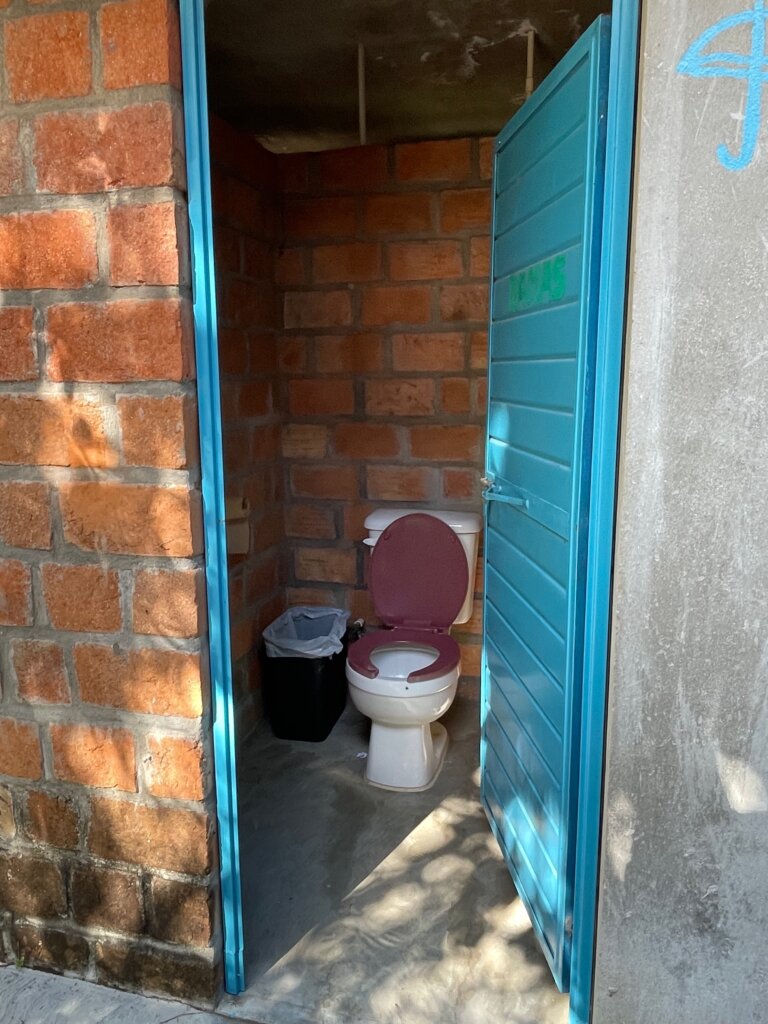
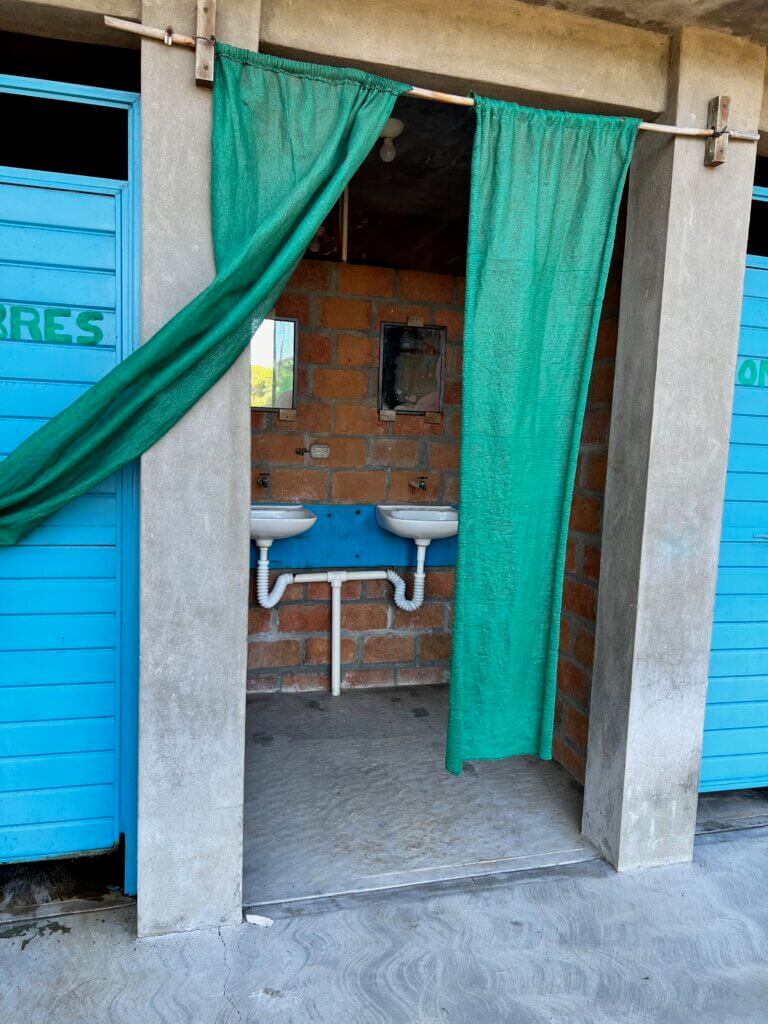
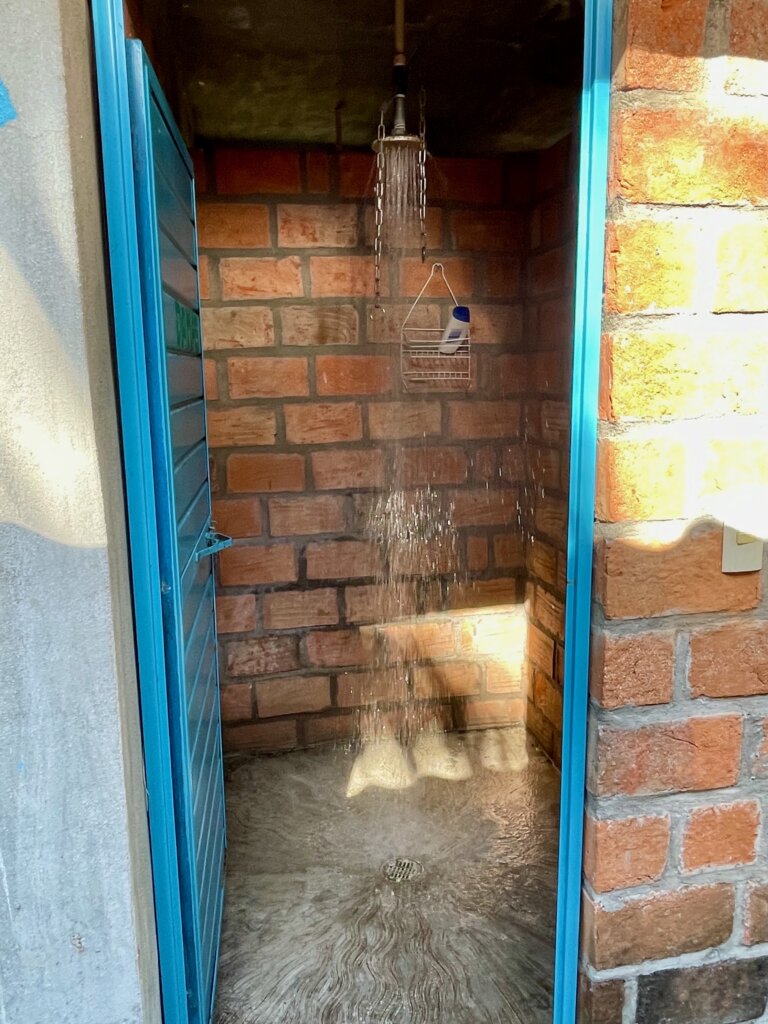
Into Guatemala, January 4th
We made a final supermarket stop in Tapachula before camping at a restaurant with a pool and noisy caged Peacocks. Listed as a popular spot for Overlanders to camp before crossing into Guatemala, just 15 minutes from the border.
Arriving at 8:30am we exited Mexico by returning our immigration card and receipt of payment. This was straight forward, the hard part was having to navigate the gauntlet of ‘helpers’ swarming the truck, each offering their services.
After crossing the bridge into Guatemala and paying the 10 Q fee, we stopped at the fumigation tent. Here we paid to have the truck tires were sprayed. At the Migración office, we received our 90-day visas and vehicle permit. The middle age immigration officer was friendly and spoke a little English as she methodically entered our details, inspected the truck’s VIN, and issued a windshield decal.
Two hours later, we were free to explore Guatemala.
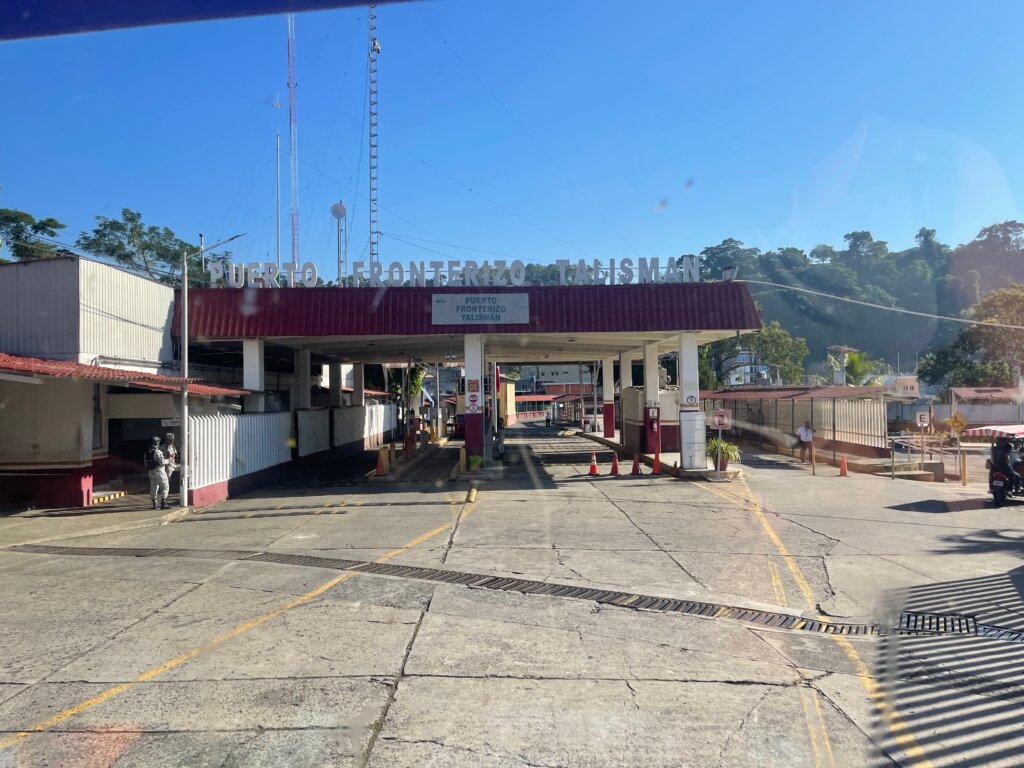
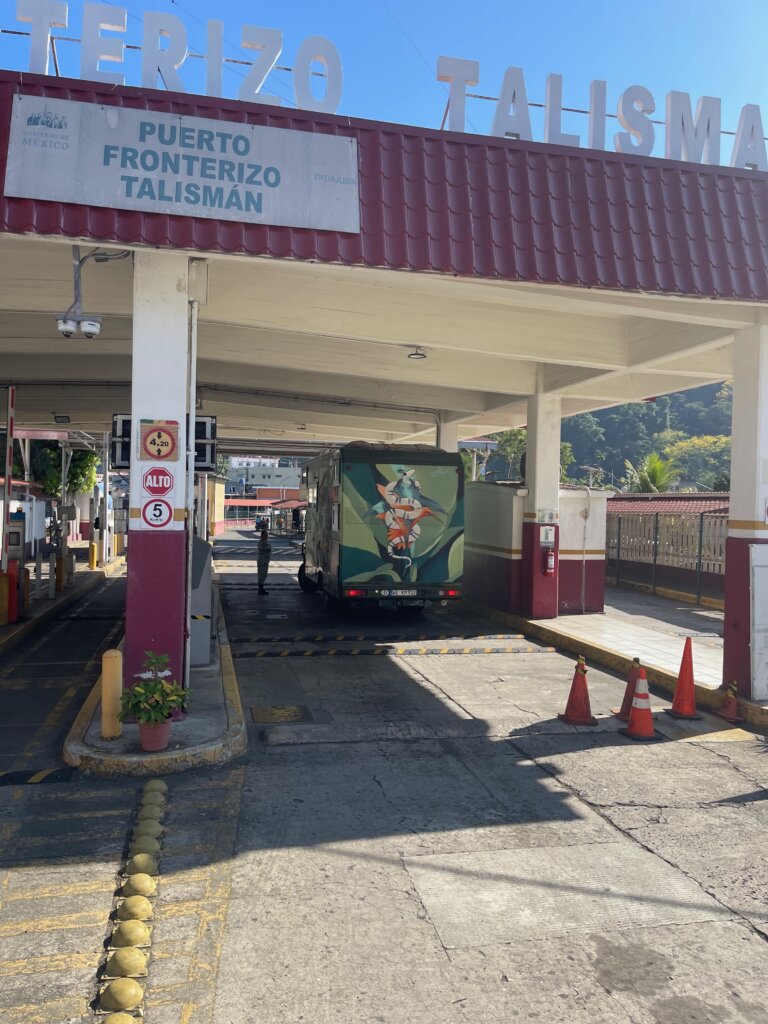
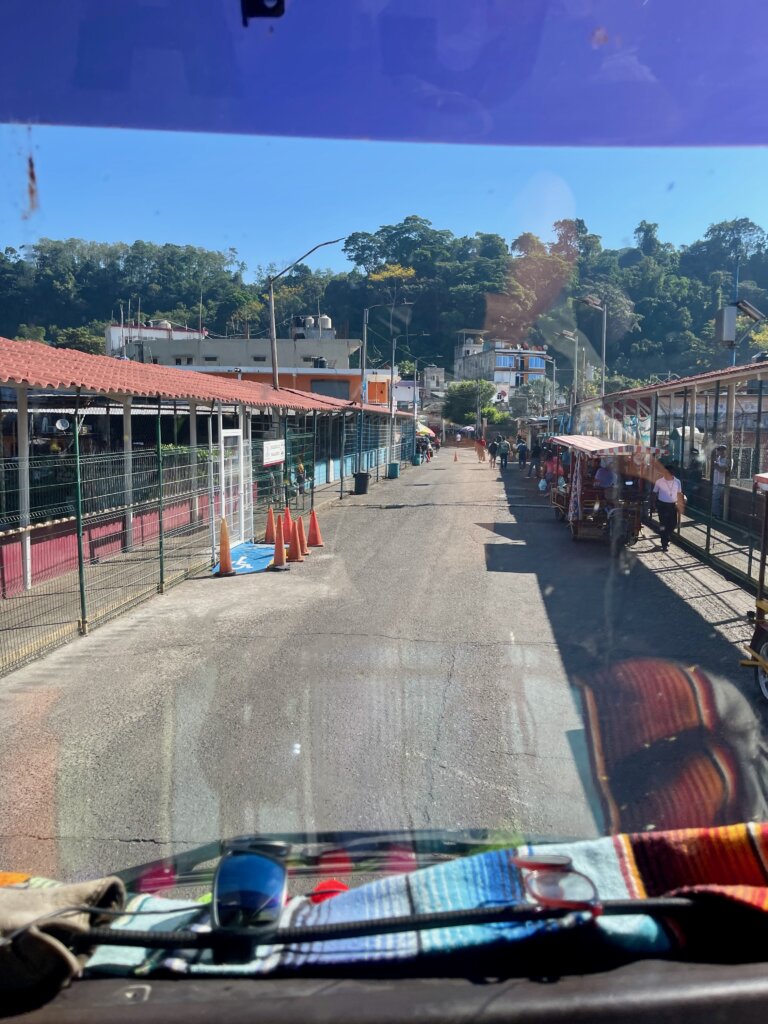


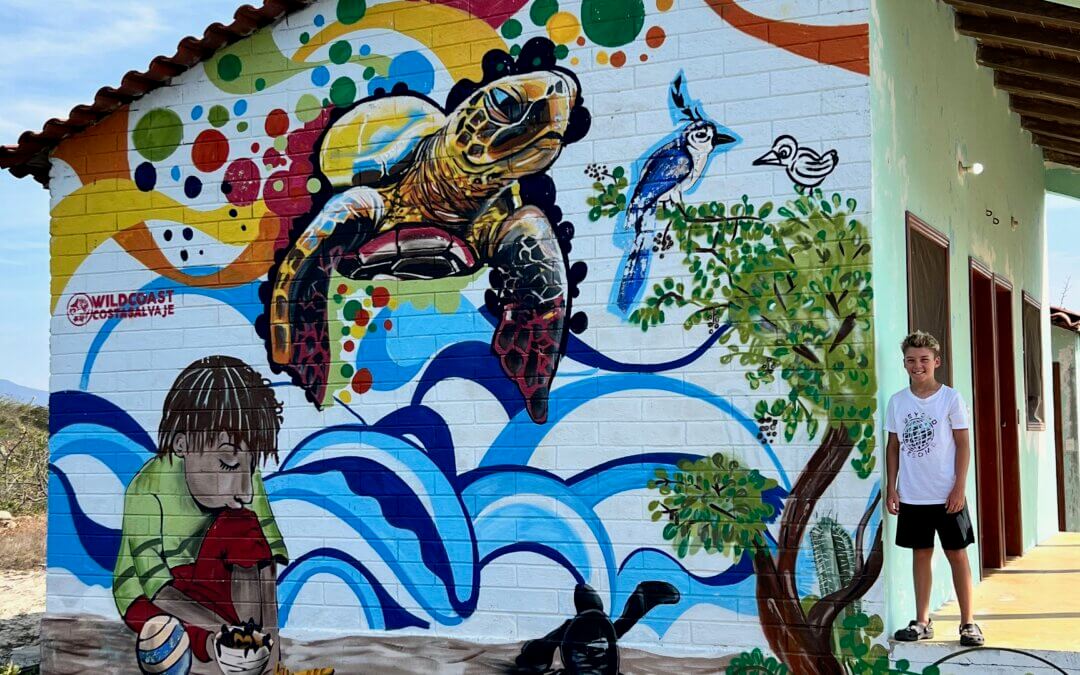
Go, go go–soon Costa Rica which of coarse very civilized with Canadian and American
money favouring it and then Panama where you will become frustrated with the
offices that book the passages to Columbia. If you land in Buenaventura try to move on –don’t spend night there–a South American said you know what they say about Buenaventura –Every port has a whorehouse–Buenaventura is a Whorehouse with a port.
Weather in Whistler is just a bit below freezing–an sunny–we need snow –maybe 10days since last dump which wasn’t even much–that’s about it Lennox